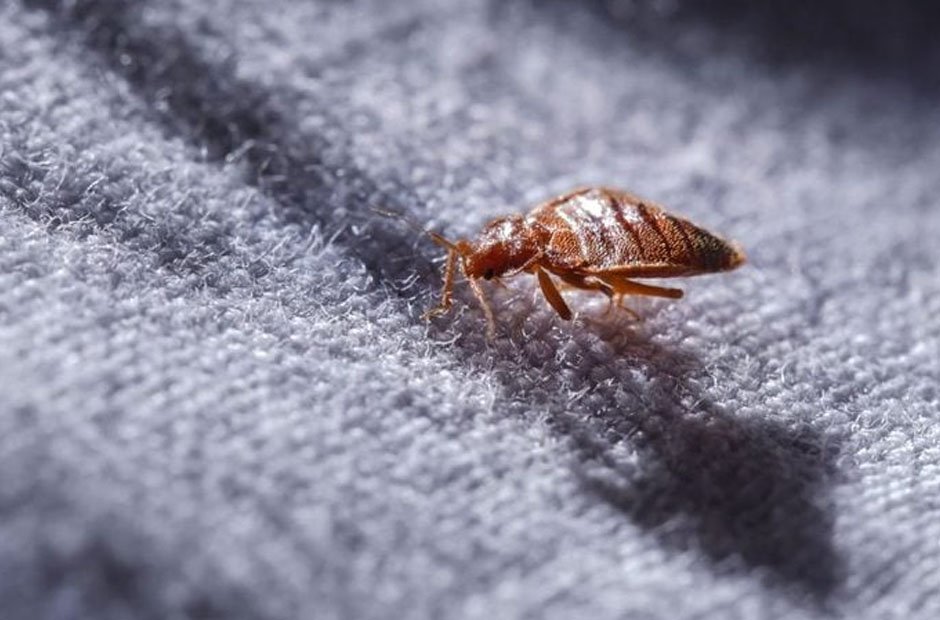Finding bed bugs in your home can be distressing. The tiny, bloodsucking pests are notoriously difficult to spot, especially because they hide in dark areas like inside the mattress, furniture cracks, etc. They also have a rapid reproductive rate that often causes a nightmare for property owners. Suspecting the presence of bed bugs in your home isn’t enough; you should go the extra mile by hiring a pest control company to treat it.
However, if you choose to attempt the treatment using DIY methods, then you should know the signs of a bed bug infestation as well as how to identify them. We have gone the extra mile to provide bed bug treatment recommendations to help get rid of the tiny, bloodsucking pests.
How to Detect Bed Bug Problems?
Know What Bed Bugs Look Like
Bed bugs are small, flat, and oval-shaped insects, about 4-5 mm long. They are usually brownish in color but can appear reddish and swollen after a blood meal. Most adult bed bugs are visible to the naked eye, although their nymphs (young bed bugs) are smaller and may be harder to spot.
Check Common Bed Bug Hiding Spots
Bed bugs are nocturnal creatures that primarily feed on human blood during the night. Due to their feeding nature, they’re most common around human resting areas like couches, mattresses, beds, and furniture.
To detect bed bug problems, start by carefully examining your mattress and bedding. Look for the following signs:
- Dark stains or smears, often a result of their excrement.
- Rusty or reddish spots, signaling bed bugs that were crushed or squashed while feeding.
- Tiny pearly-white colored eggs and eggshells, often in crevices and seams of mattresses or furniture.
- Shed skins signaling bed bug molting and growth through their life stages and commonly found near their hiding places.
Common hiding spots include;
- Bed frame and headboard: Check the joints, cracks, and screw holes in your bed frame and headboard.
- Box springs and mattress tags: Examine the tags and seams of your mattress and box spring, as bed bugs often find refuge there.
- Behind wallpaper and wall hangings: Peel back loose wallpaper or inspect wall hangings, as bed bugs can hide in these areas.
- Electrical outlets and switches: Bed bugs can crawl into electrical outlets and switches, so inspect these areas carefully.
- Luggage and clothing: If you’ve recently traveled or received secondhand clothing or furniture, thoroughly inspect your luggage and items for any signs of bed bugs.
How to Treat Bed Bug Problems?
Detecting bed bug problems is never good news. However, you can stop the problem from growing fast by taking immediate action. Below are some recommended treatments to combat bed bug infestation on your property.
Contact a Pest Control Company
Hiring a pest control company comes with many advantages, including professional help and expert support to wipe out the bed bug population. Speak to a bed bug control company around you to explore your choices and have them treat the problem once and for all. But if you choose to DIY the treatment, follow the next set of recommendations.
Gather Bed Bug Treatment Supplies
To effectively eliminate bed bugs, you will need the following supplies:
- Vacuum cleaner with a crevice attachment for sucking up bed bugs, eggs, and nymphs.
- High-temperature steam cleaner to kill bed bugs and their eggs.
- Bed bug-proof encasements for your mattress, box spring, and pillows.
- Washing machine and dryer to wash infested bedding, clothing, and fabrics in hot water (at least 120°F) and dry them on the highest heat setting.
- Insecticides
- Silica gel or diatomaceous earth to dehydrate and kill bed bugs.
Thoroughly Clean and Declutter
Declutter your living space before applying any treatment. Remove all unnecessary items, such as piles of clothes or cluttered furniture, as they provide hiding places for bed bugs. Launder or dry-clean infested fabrics, and seal them in plastic bags until they can be treated.
Encase Mattresses and Furniture
Once the infested areas are thoroughly cleaned and treated, encase your mattress, box spring, and pillows with bed bug-proof covers. These encasements prevent bed bugs from escaping or infesting new areas.
Apply Insecticides & Desiccants
Proceed to apply insecticides around your home, especially in areas where bed bugs are commonly found. Ensure to concentrate on areas containing their eggs, as these can breed a new round of infestation when left unattended.
Dealing with bed bugs can be hard and overwhelming. It is always important to know that you can always contact a pest control company, irrespective of how many times you’ve tried to DIY your bed bug control problem.
















